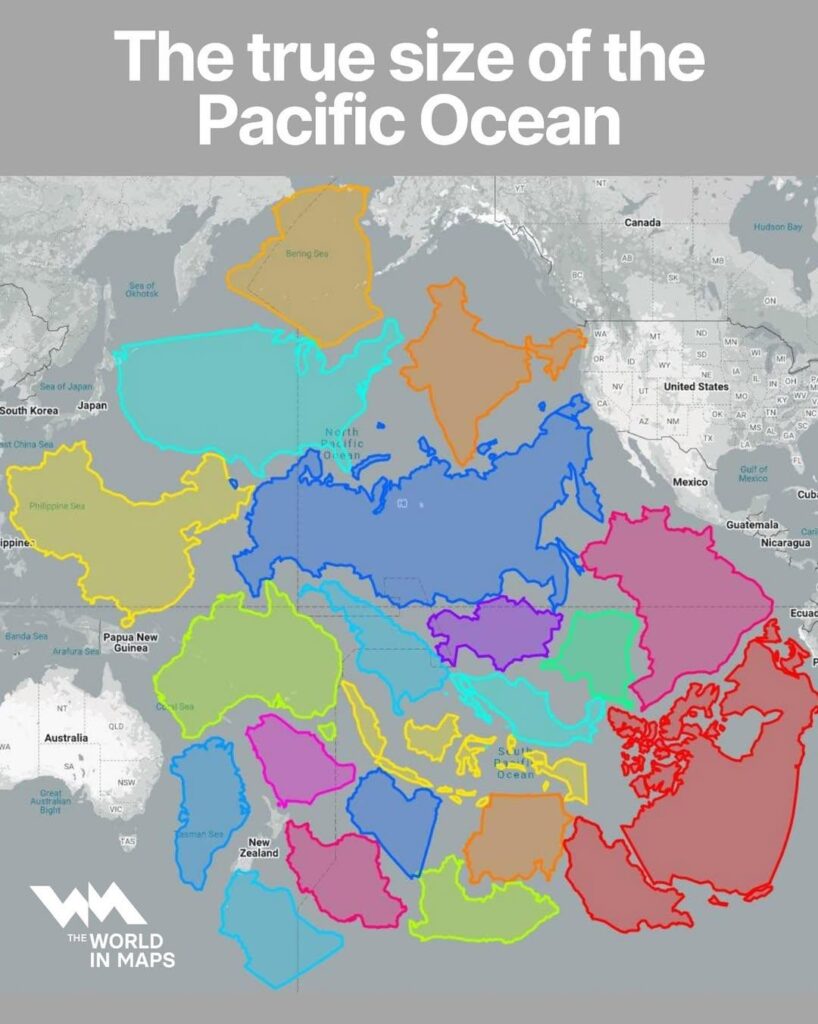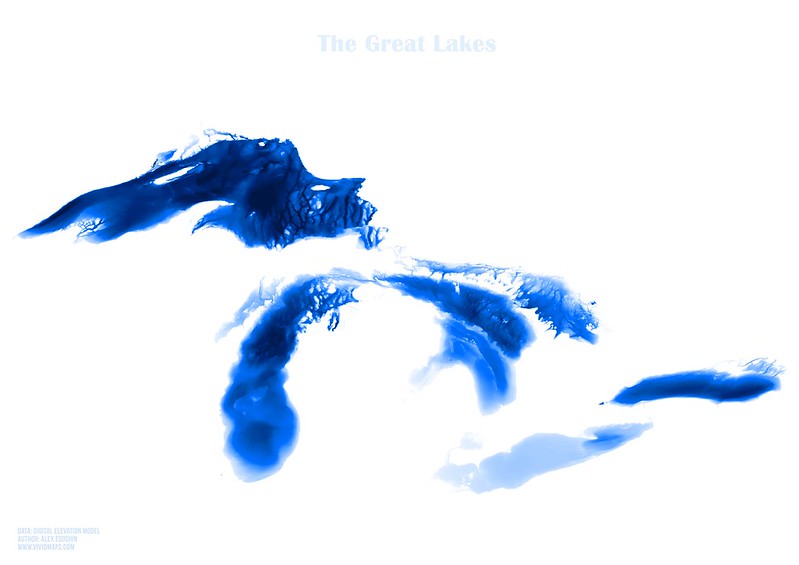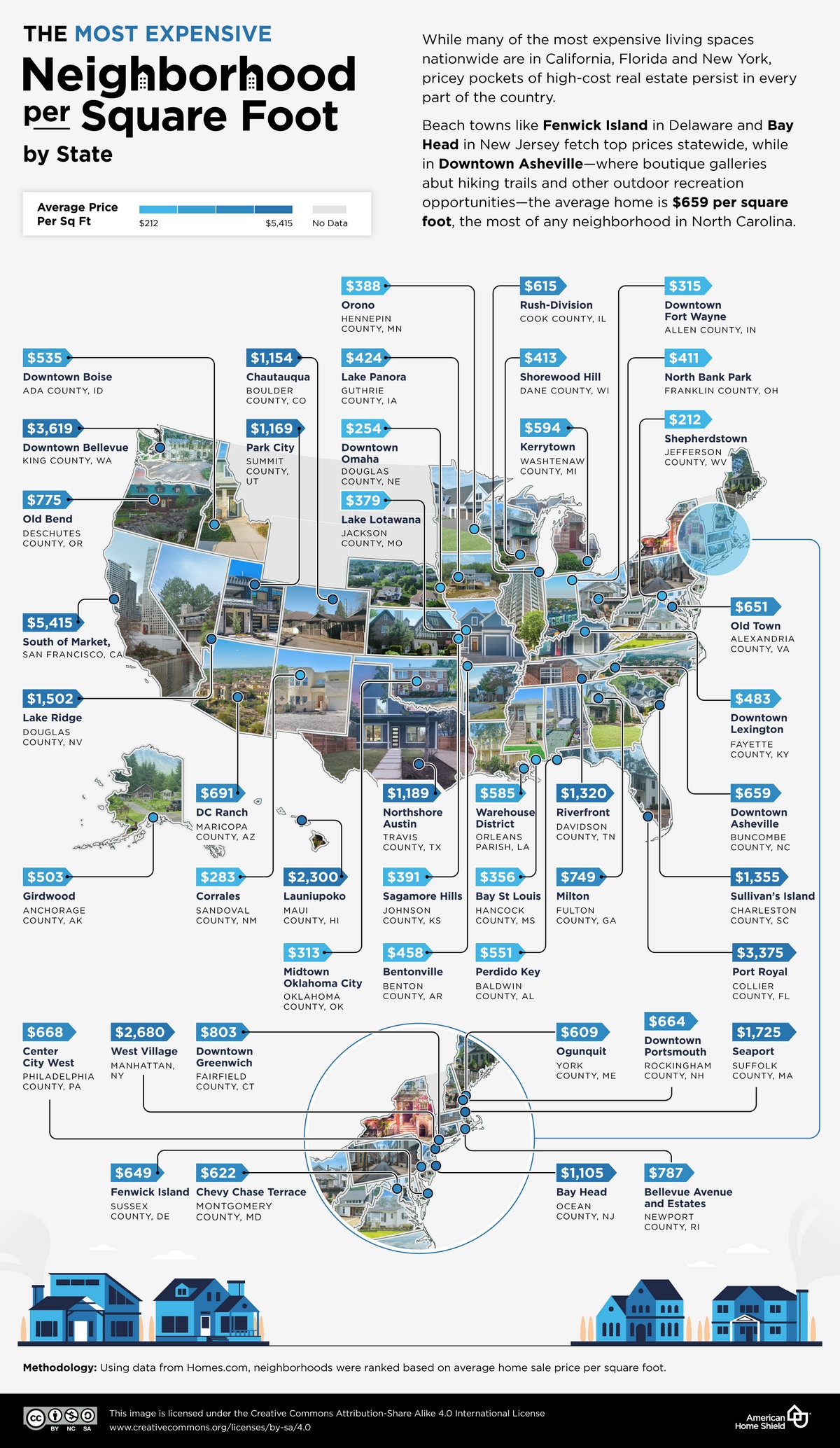The True Size of the Pacific Ocean
When people talk about the Pacific Ocean being “big,” it hardly does justice to what we’re dealing with. This isn’t just another ocean. It’s the heavyweight of the planet, covering about 165,250,000 square kilometers (63,800,000 square miles) – roughly a third of Earth’s entire surface. Put simply, it’s larger than all the land on Earth combined.
Average depth? Around 4,280 meters (14,040 feet). But that’s just the middle ground. The deepest spot – the Challenger Deep in the Mariana Trench – drops to about 10,900 meters (35,800 feet). Flip Mount Everest upside down and sink it in the trench—it still wouldn’t break the surface. At the other extreme, the Pacific floor has its own mountain ranges. Parts of the mid-ocean ridge rise more than 2,000 meters (6,500 feet) above the seabed and stretch for tens of thousands of kilometers. They’re hidden under the waves, but they rival or outmatch anything above sea level.

This first map helps put size into perspective. Russia, the largest country on Earth, spans approximately 17 million km² (6.6 million mi²). Line it up against the Pacific, and you could fit it inside nearly ten times. That’s one country already big enough to stretch across eleven time zones, swallowed up again and again by the ocean.

The second map goes further: all the continents, plus Greenland, dropped into the Pacific basin. And the water still stretches beyond them. The comparison is almost hard to believe, but it’s accurate – the Pacific really does outsize all the world’s land combined.
The Pacific’s story begins long before humans ever mapped it. About 250 million years ago, when the supercontinent Pangaea broke apart, the ancient world ocean – Panthalassa – left behind today’s Pacific. Ever since, it has been reshaped by tectonic forces. Along its rim runs the famous Ring of Fire, where shifting plates are responsible for most of Earth’s earthquakes and volcanoes.
And the future? Nothing about the Pacific is static. On a human timescale, the concerns are climate change, overfishing, warming waters, and acidification. Over millions of years, the entire basin will keep evolving. Parts of its floor are being pulled under surrounding continents, which means that slowly – but surely – the Pacific is shrinking. One day, far in the future, it may disappear entirely as continents drift back together.








